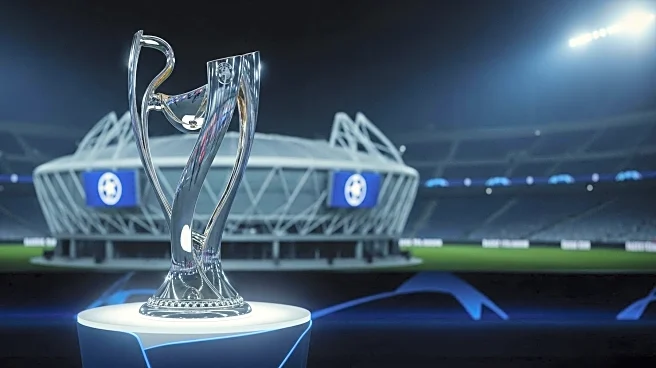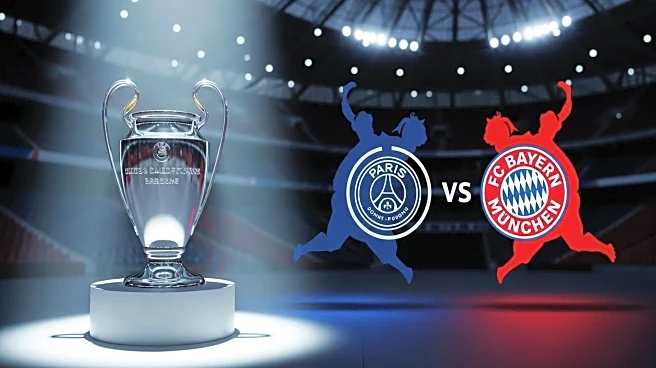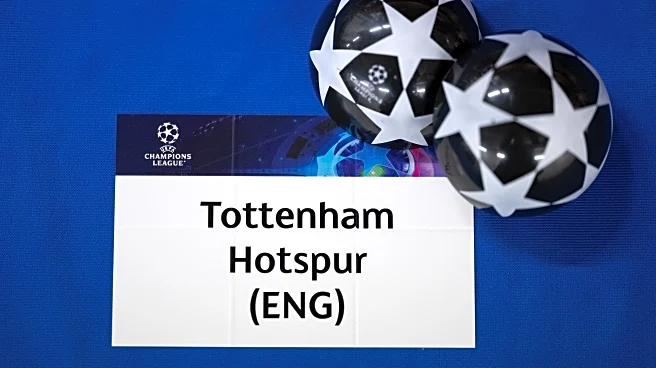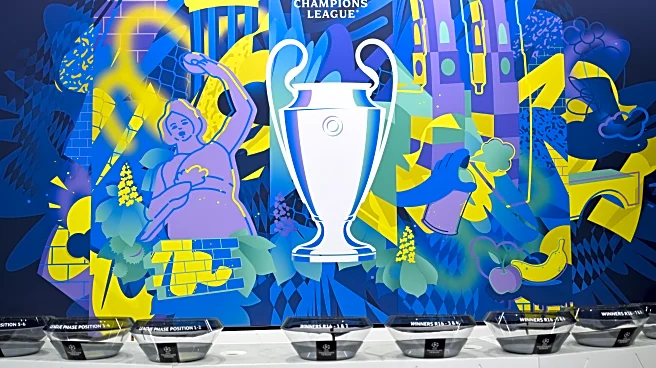What is the story about?
What's Happening?
The UEFA Champions League draw for the 2025-26 season has been completed, revealing matchups for the 36-team league stage. This season introduces a new format where each team will play eight different opponents during the league phase, with four home and four away matches. Notable teams such as Liverpool, Manchester City, Real Madrid, and Barcelona have learned their opponents. The top eight teams from the league phase will advance directly to the round of 16, while teams ranked ninth through 24th will compete in knockout phase playoffs to join the last 16. The league phase is scheduled to run from September 2025 to January 2026, culminating in the final at Puskas Arena in Budapest on May 30.
Why It's Important?
The new format of the UEFA Champions League is significant as it increases the number of matches and provides more opportunities for teams to compete at a high level. This change could impact the strategies of clubs and coaches, as they navigate the increased competition and aim for a top-eight finish to secure a direct path to the round of 16. The expanded format also enhances the commercial appeal of the tournament, potentially increasing revenue from broadcasting rights and sponsorships. Fans will benefit from more high-stakes matches, adding excitement and engagement throughout the season.
What's Next?
As the league phase begins, teams will focus on securing a top-eight position to avoid the additional playoff round. Clubs will strategize to optimize their performance across the eight matches, balancing domestic league commitments with Champions League aspirations. Stakeholders, including sponsors and broadcasters, will closely monitor the tournament's progress, assessing the impact of the new format on viewership and engagement. The final in Budapest will be a major event, drawing global attention and showcasing the culmination of the new league structure.
Beyond the Headlines
The introduction of the new format may influence future decisions in other European competitions, as organizers evaluate the benefits of increased matchups and expanded participation. This shift could also affect player workload and club management strategies, as teams adapt to the demands of more frequent international competition. The long-term success of this format could lead to further innovations in tournament structures, potentially reshaping the landscape of European football.
AI Generated Content
Do you find this article useful?















